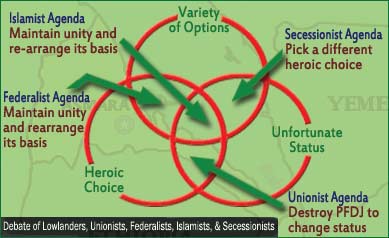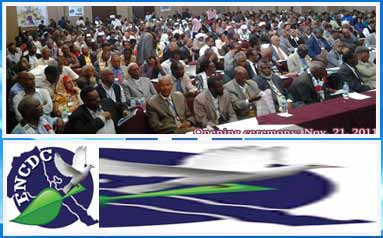Precision, Symmetry and The Analytical Mind
 In Eritrea, highland women use a spindle and cotton wad to spin yarn in order to clothe their husbands with gabi (four-ply cotton shawl) for winter. They twirl and throw the spindle, topped with a wooden disc, in the air and catch it with their nimble fingers to give it yet another twirl to spin the yarn. But neither the spindle nor the wooden disc seems to have a standard shape. Both come, as it were, in all shapes, sizes and substances. And nobody seems to care.
In Eritrea, highland women use a spindle and cotton wad to spin yarn in order to clothe their husbands with gabi (four-ply cotton shawl) for winter. They twirl and throw the spindle, topped with a wooden disc, in the air and catch it with their nimble fingers to give it yet another twirl to spin the yarn. But neither the spindle nor the wooden disc seems to have a standard shape. Both come, as it were, in all shapes, sizes and substances. And nobody seems to care.
All this time, the women sit on a wooden stool with legs of unequal length and shape. Again nobody seems to care. Perfection and standardization is alien to our culture.
Sillas is a potter and lives by selling her clay utensils at the village market. She uses her bare hands to knead the clay and to fashion it into pots and bowls for sale; for the wheel never seems to have secured a place in our culture. The result is clearly seen in the asymmetrical shapes of our traditional pots, bowls, wickerwork, stools, chairs, windows, pillars, etc.
Not only this, but watching our hedmos (adobes, common in the Highlands), our agnets (thatched circular dwellings common in the Lowlands) and our aguadus (huts), one realizes that the perfect circle, the perfect triangle, the perfect square, rectangle, eclipse, etc. is non-existent. As for circles, anything goes as long as the lines meet again after wandering in space. Squares are acceptable as long as four lines meet grudgingly at four points; and triangles, as long as a space is enclosed with three hesitant lines. Is there not anyone who cares?
Now let’s go to our traditional paintings, the ones that are painted by our priests and deacon; for frankly speaking, our paintings had their origin and development in monasteries and churches and among the clergy.
According to scholars, both native and foreign, church murals or canvases are very discriminating and somewhat biased when they depict saints and sinners, heroes and villains, valiant and ruffians. The Moslems are spared of such ‘artistic crime’ having already shunned paintings and graven images in a bid to protect the pure religion of Abraham from backsliding into paganism.
The saints are always brighter and bigger. The sinners are darker and smaller. So much so that perspective is given the least consideration in our traditional paintings. If, for example, St. Michael is ten kilometers away busy weighing souls awaiting a final verdict, and the devil is in the foreground busy grilling unrepentant sinners, it goes without saying that in the painting, St. Michael appears larger than the poor devil. Perspective is thrown out the window in order to give the saint undue respect.
And last but not least, the eye being the most precious organ in the human body, is given a size that almost fills the face, an artistic aberration that makes the person look like an alien from planet Mars!
Sometimes the pictorial treatment given to saints is even transferred to places and things of profane interest. In most folk paintings that I observed while in Asmara, whether in barroom murals or on the bodies of village buses, the lion which is often depicted giving an eternal chase to a gazelle in a graceful stride reminiscent of waltz or tango, appears bigger than the trees around, because the painter seems more interested in the royal lion than in the ubiquitous trees. And in a landscape showing a village with a modern bus packed with people arriving at a station, the latter stands out large and imposing for obvious reasons.
So what has all this to do with our traditional thinking and mentality, and with the fact that we Africans (excluding the ancient Egyptians, of course) are far behind Europeans in unraveling the secrets of nature, and in subduing its forces and ruling over it, and have not been able to participate fully in the past centuries’ rapid advances in science and technology?
I think, and this is very hypothetical, our ‘technological’ output in terms of cultural products may be a reflection of our thinking patterns, ideation, creativity and intellectual discipline.
Asymmetrical tendencies in our traditional artifacts could have resulted probably from an asymmetrical way of thinking and rhetoric (mostly devoid of logic and inductive reasoning, but replete with proverbs, symbolisms, analogies, witticism, maxims, etc) which might have stood as obstacle to cold and distanced analytical thinking and the use of pure reason to discover the laws of nature.
Europeans, thanks to the Greeks and the Romans, and last but not least, thanks also to Islamic civilization which saved the West from backsliding into barbarism, inherited a sound basis for symmetrical thinking and cold logic. This coupled with, scholasticism, monasticism and humanism during and after the Middle Ages (discipline had its origin among the catholic monks and friars who toiled in the monasteries with much resolve and determination coupled with strong faith and superhuman mental and spiritual exertion) produced a mind that was both regimented and perseverant, that respected symmetry, precision, perfection, perspective, regularity, punctuality, etc. with the happy result that it led Europeans on the path of great discoveries and mind-boggling inventions.
In brief, the European brain, while basically the same with any brain irrespective of race or place (in fact, the mongoloid race, if there is any, is said to be more endowed with intelligence than the white race), could shine because it was trained to work like a computer where ideas are arranged, filed, put into perspective, regulated, regimented and finally marched to discover the physical laws of nature.
Only a brain with a mechanical precision and regulation can invent the clock, the pulley and the movable printing machine.
On the other hand, Christianity (Catholicism) had, to a certain extent, contributed to Western civilization by way of getting rid of unproductive destructive pagan superstitions, faulty world perceptions, and freed the mind from all inordinate desires, aimless adventures and bestial liberty so that the ever-searching European mind already trained to think in a philosophical and scientific manner could eventually find a propitious ground to grow and flourish.
Such a mind molded in the crucible of ‘scientific tests and trials’ could tackle intricate problems by first breaking up things into their basic components, and with a clinical observation, logic, symmetry, precision and perspective as tools, and the perseverance and discipline borrowed from monasteries and convents, could finally discover the laws of nature and the realities of things; for nature is in its own way and basically perfect, symmetrical, precise, and logical, and only a mind imbued with the similar attributes can discover its secrets.
Maybe a person can with the heart discover divine truths and realities, but only with a scientifically disciplined and perseverant mind can one unravel the secrets of nature, discover its laws, and finally use one’s findings for the betterment of human life.
Whenever in the past I discussed with my philosophical friend (who is now no more) as to why Europeans have in the past been on the vanguard of the world’s scientific and technological progress while Africans and to a lesser extent Asians (excluding the Moslem countries who produced Saladin, a symbol of tolerance; physicians like Avicenna, Averroes, sociologists and historians like Ibn Khaldun and Ibn Batuta and so many architects; poets like Omar Khayyam, Rumi, Attar, etc, philosophers, etc) were not able to fully participate in this great human accomplishment.
My friend, as usual, presented geography, topography, climate, etc. as some of the reasons given to explain this ‘great delay’ this ‘historic benightedness’ regarding non-Europeans. In the past, a Frenchman could walk on foot from Paris to Istanbul without having to fight with lions or having to cross rivers infested with crocs and malaria-causing mosquitoes, and could sail to the shores of North Africa in a simple boat without having to face ferocious warring tribes (they had been subdued first by Julius Caesar and later by the newly converted Germanic chiefs) or fearsome ‘sea monsters’ and mighty storms.
Furthermore, Europe is blessed with good harbors and most of its rivers are navigable which enhanced communication, trade and human intercourse. Add to this Christianity (Catholicism), which for some time unified the people under one Pope and one Religion, introduced monasticism which in its turn encouraged hard work, discipline, regimented life and taught that work is prayer. And last but not least, we have the new Protestant work ethic that elevated greed to the rank of virtue, not to mention high-level organization and the love for adventure, etc. After all this, what more can the brain ask to produce prodigies like Galileo, Copernicus and Newton, Marx, Einstein, and at the other end of the spectrum, to provide us with monsters like Hitler and Mussolini?
I think our problem, as Eritreans and Africans, is that we seem to lack the culture of perfection and precision which is the basis for scientific advancement. Hence, we should introduce or maybe reintroduce into our people the culture of punctuality, precision, programming, time management, etc, and should strive for perfection in everything we do and produce.
Nature can only be subdued if we approach it with a mind that has been molded and readied for precision, perfection, regularity, consistency, logic and symmetrical thinking. This is not negotiable. This asks for no bargaining. It is the only way to scientific and technological advancement; and coupled with wisdom and right judgment, the only path for the ennoblement of the human race.



Awate Forum